GPUs
Latest

NVIDIA RTX 2080 Super review: A modest, necessary upgrade
When NVIDIA announced its revamped Super RTX video cards earlier this month, the bulk of the attention was on its affordable midrange entries, the RTX 2060 Super and 2070 Super. For just $399 and $499, they delivered significantly faster speeds than their predecessors, and they arrived just in time to go head to head with AMD's latest Radeons. Then there's the RTX 2080 Super, which replaces the RTX 2080 at the same $799 price. Based on its specs alone, it didn't seem like a huge leap forward. That's something my testing confirms.
Devindra Hardawar07.24.2019
NVIDIA RTX 2060 Super and 2070 Super review
For once, AMD made NVIDIA sweat. NVIDIA's new RTX Super graphics cards are clearly a response to AMD's new midrange GPUs, the Radeon RX 5700 and 5700 XT. For months, AMD has been hyping how much faster they are than the first RTX cards. The only solution for NVIDIA was a surprise batch of faster cards, which, in turn, led to AMD announcing a price drop at the last minute. Witness the capitalist ideal of competition in action.
Devindra Hardawar07.12.2019
Radeon RX 5700 and 5700 XT review: AMD brings the fight back to NVIDIA
The unveiling of the Radeon 5000 family and Ryzen third-gen chips at Computex made it clear this was going to be a special year for AMD. Its latest CPUs include a monster 12-core chip for just $499. And with its latest video cards, the Radeon RX 5700 ($349) and RX 5700 XT ($399), AMD is finally bringing its long awaited "Navi" architecture (now called Radeon DNA, or RDNA) to a consumer GPU. But NVIDIA was paying attention. Last week it announced beefed up "Super" versions of its RTX cards, which, on paper, seemed to erase AMD's performance advantage. All of this is great news for gamers, who now have a strong new lineup of affordable midrange graphics cards to choose from. But AMD is once again at risk of being overshadowed by its flashier competitor. (No wonder it rushed out a last-minute price drop.)
Devindra Hardawar07.07.2019
AMD tells all about its $449 Radeon RX 5700 XT GPU
After unveiling its first 7-nanometer "Navi" GPUs a few weeks ago at Computex, the Radeon RX 5000 series, AMD finally gave us more details at E3. Its first cards from the new "RDNA" family will be the $449 Radeon RX 5700 XT, which will take on NVIDIA's RTX 2070, and the $379 RX 5700, which competes with the NVIDIA RTX 2060. AMD says the more powerful 5700 XT will feature 40 compute units, boost speeds upwards of 1.9GHz, and up to 9.75 teraflops. In an on-stage gameplay demo, it outperformed the RTX 2070 by around 20 FPS in 1440p. The 5700, meanwhile, has 36 compute units and speeds up to 1.7GHz. Both cards will be available on July 7th.
Devindra Hardawar06.10.2019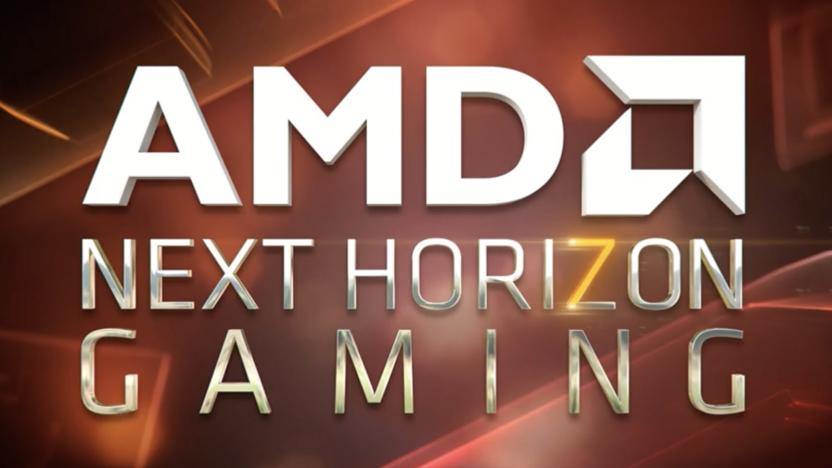
Watch AMD's E3 2019 event here
AMD is about to go live with its E3 2019 Next Horizon Gaming event, and we're expecting plenty of new details on their Navi GPU line. Post-Computex, we're waiting to hear more on what these cards can do, including information about ray tracing. While AMD has said little about the feature yet, both Sony and Microsoft have said their new consoles will use these GPUs and support ray tracing. While we might hear some news about CPUs, we're expecting for it to stay gaming-focused. The stream will be live at 3PM PT here:
Engadget06.10.2019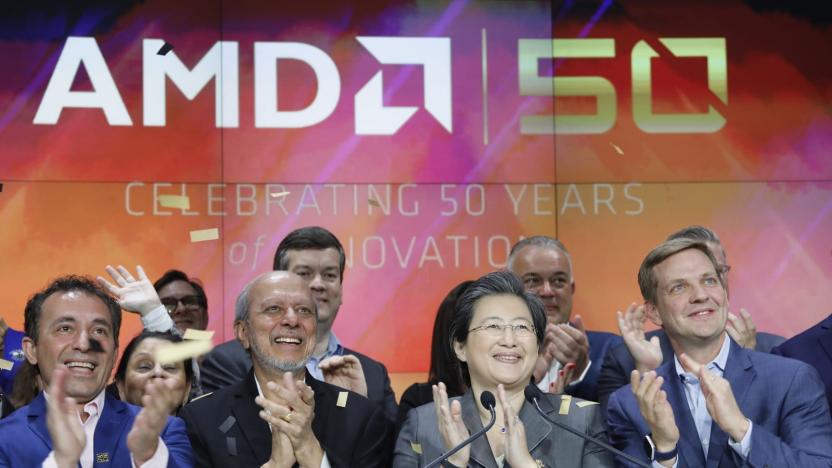
AMD will share its graphics technology with Samsung
AMD stole the spotlight at Computex 2019, where it shared details on its third generation Ryzen CPUs and first Navi GPUs. But that's not the only big news AMD has in store. Today, the company announced a multi-year partnership with Samsung, in which AMD will license its Radeon graphics IP for use in Samsung smartphones and other mobile applications.
Christine Fisher06.03.2019
Intel and AMD won Computex 2019
You can thank AMD and Intel for the influx of news out of Computex over the past week. Both chip companies announced some major new products: Intel showed off its 10-nanometer 10th-gen laptop chips, and AMD gave us details on its third generation Ryzen CPUs and first Navi GPUs. At first glance, that might all sound like typical tradeshow news, the next steps in a boring, iterative upgrade cycle. But each announcement spoke volumes -- they're not just showing us what Intel and AMD are working on for the next year, they gave us a preview of what's to come for the next decade.
Devindra Hardawar05.30.2019
AMD's first Navi GPUs are the Radeon RX 5000-series
Just as we expected, AMD took the wraps off of its first 7nm Navi consumer GPU's today at Computex, though the company is still playing coy with details. The Radeon RX 5000 series is the name of the new lineup, and the first featured card is the RX 5700, a mid-range offering that will go toe-to-toe with NVIDIA's RTX 2070 GPU. At this point, the Radeon VII keeps top billing for the company. You won't see Navi on the box, though -- AMD is officially calling its new architecture RDNA, or Radeon DNA.
Devindra Hardawar05.26.2019
Lenovo's latest gaming laptops pack 9th-gen Intel Core CPUs
Lenovo has announced two new gaming laptops, while it has refreshed some models in its Legion lineup -- all of which work with 9th-gen Intel Core i7 processors. The IdeaPad L340 Gaming laptop is a little more budget-friendly than other portable Lenovo gaming machines. It has blue lighting and options to switch between Gaming and Quiet modes. It's compatible with NVIDIA's new GeForce GTX 1650 GPU and features Dolby Audio, while Intel Optane memory is available as an option. The L340 will be available late May, starting at $870 for the 15-inch model and $920 for its 17-inch sibling.
Kris Holt04.23.2019
NVIDIA's GeForce GTX 1660 Ti will lead to cheaper gaming laptops
If you were wondering when, or if, NVIDIA would bring its GTX 1660 Ti GPUs without ray-tracing cores to laptops, the answer is "definitely" and "now." It unveiled both GTX 1660 Ti and GTX 1650 Max-Q GPUs, promising up to 50 percent more gaming performance than last-gen GTX 1060 laptops and up to four times the performance of GTX 960M. Better still, the GTX 1650 laptops will start at prices as low as $799, putting 100 fps 1080p gaming in reach for more users.
Steve Dent04.23.2019
Toyota will be first to use NVIDIA's self-driving simulator
NVIDIA has announced that its autonomous vehicle simulation platform Drive Constellation is now available and that Toyota will be the first customer. The cloud based platform, first announced by CEO Jensen Huang last year, will let self-driving car developers run tests on virtual, rather than real roads. Simulated vehicles can operate in situations ranging from routine to dangerous, "with greater efficiency, cost-effectiveness and safety than what is possible to achieve in the real world," NVIDIA said.
Steve Dent03.18.2019
NVIDIA RTX 2060 hands-on: Ray-tracing on a budget
Finally, NVIDIA's RTX 2060 is here. And that's great news for gamers on a budget. At $349, it's the cheapest of NVIDIA's desktop RTX GPUs, which sport next-generation features like real-time ray tracing. The mid-range RTX 2070 goes for around $500, while the 2080 sells for $700 and the highest end 2080 Ti goes for nearly $1,000. Sure, it's still pricey -- NVIDIA's GTX 1070 originally debuted around $380 years ago -- but the RTX 2060 also delivers plenty of value for anyone who wants to dip their toes into NVIDIA's latest tech.
Devindra Hardawar01.08.2019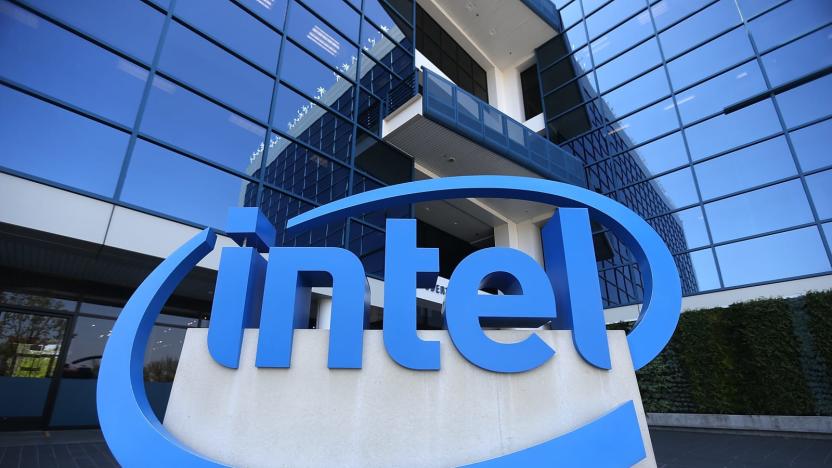
Intel is bringing teraflop integrated graphics to 10nm chips in 2019
No, you didn't read that wrong. Intel's 11th generation integrated graphics will pack in more than a teraflop worth of computing power, the company announced today. That means you'll actually be able to play plenty of PC games without the need for an expensive dedicated video card. To give you a comparison, the Xbox One X sports a 6-teraflop GPU, while the PlayStation 4 Pro has 4.2 TFLOPS of power. AMD's HD4800 GPUs were the first to break the TFLOP barrier a decade ago. Intel claims its Gen11 graphics will be twice as fast as the its Gen9 hardware in a "popular photo recognition" application. It also has more than double the execution units: 64 compared to Gen9's 24.
Devindra Hardawar12.12.2018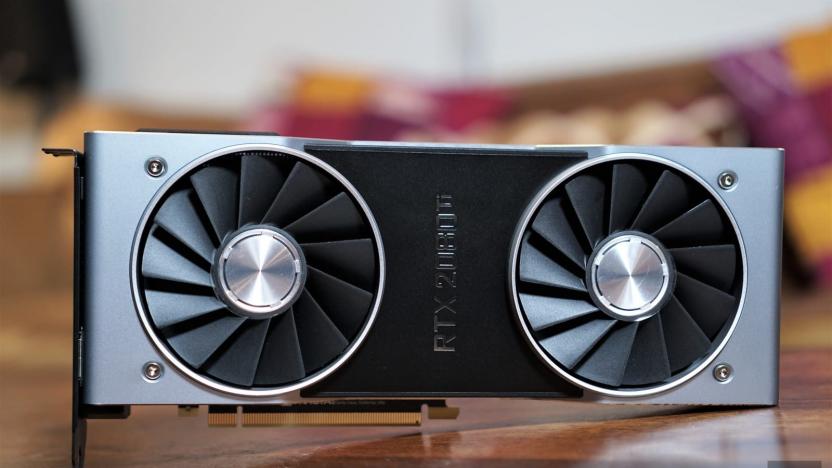
NVIDIA RTX 2080 and 2080 Ti review: To 4K 60 FPS, and beyond
NVIDIA's new RTX graphics cards are for the gamer that wants it all. I'm talking about 4K gaming beyond 60 frames per second, with the graphics settings dialed to the max. Both the RTX 2080 and RTX 2080 Ti are a significant leap beyond NVIDIA's last GPU generation, but they're more than just the gold standard of 4K gaming. They also bring the possibility of real time ray tracing -- a light rendering technology that used to be reserved for big budget CG movies -- to consumers for the first time. And that has the potential to change the gaming landscape forever.
Devindra Hardawar09.19.2018
NVIDIA says the RTX 2080 GPU is twice as fast as the GTX 1080
It's clear that NVIDIA's newly announced 20-series GPUs are incredibly powerful, but so far, it's been tough to tell how much faster they are than the previous generation. Today during a press briefing at Gamescom, the company gave us a bit more insight: The new RTX 2080 is up to twice as fast as the GTX 1080 when using the new DLSS (Deep Learning Super-Sampling) feature. That relies on the Turing GPU's Tensor Cores for AI-powered rendering. Basically, it's a less GPU intensive way of getting smoother edges on 3D objects.
Devindra Hardawar08.22.2018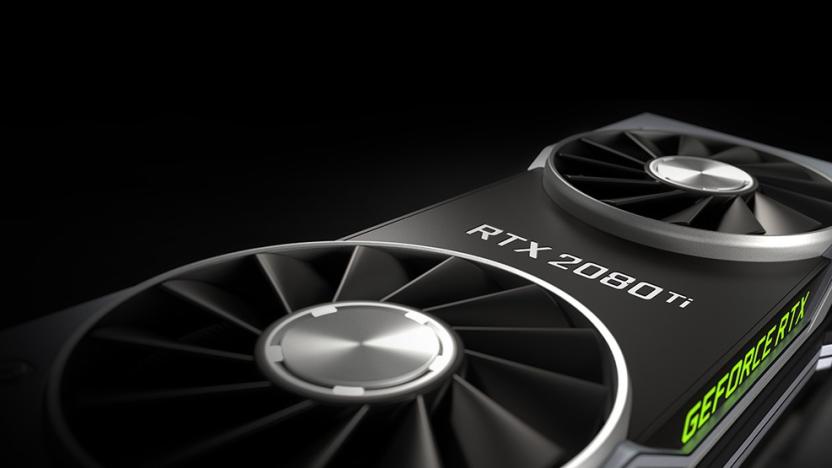
NVIDIA's $1,199 RTX 2080 Ti is the fastest GeForce card ever
You've seen the leaks, but today at Gamescom NVIDIA officially announced its new line of RTX video cards. And, thanks to the company's new Turing hardware, they're just as crazy powerful as you'd expect. The top of the line is the RTX 2080 Ti, which packs in 4,352 CUDA cores, just a bit less than the Quadro RTX 6,000's 4,608 cores. And while it has the same 11GB of RAM and 352-bit memory bus as the GTX 1080 Ti, the new model uses GDDR6 memory, allowing for higher memory bandwidth of 616 Gbps. That's a lot of specs to swallow, but it all basically means this is NVIDIA's fastest consumer GPU by far. The RTX 2080 Ti is available for pre-order today for a whopping $1,199, and it will ship on September 20th. But you can save a bit by going for the $999 standard edition when that's available. There are the other 20-series cards to consider, like the $799 RTX 2080 and $599 RTX 2070 Founders Editions. The standard versions of those cards will run for $699 and $499, respectively, but you'll have to wait a bit to grab those.
Devindra Hardawar08.20.2018
Watch NVIDIA's GeForce RTX launch right here at 12PM ET!
By holding a rare solo press conference at Gamescom 2018, NVIDIA is offering a pretty good clue about what it will announce. Thanks to the inevitable leaks, we know it'll likely take the wraps off its latest consumer gaming graphics cards, including the flagship GeForce RTX 2080 Ti. All signs point to Turing-based GPUs with ray-tracing tech (hence RTX rather than GTX) that will make games more realistic -- much like we just saw with its professional Quadro cards.
Steve Dent08.20.2018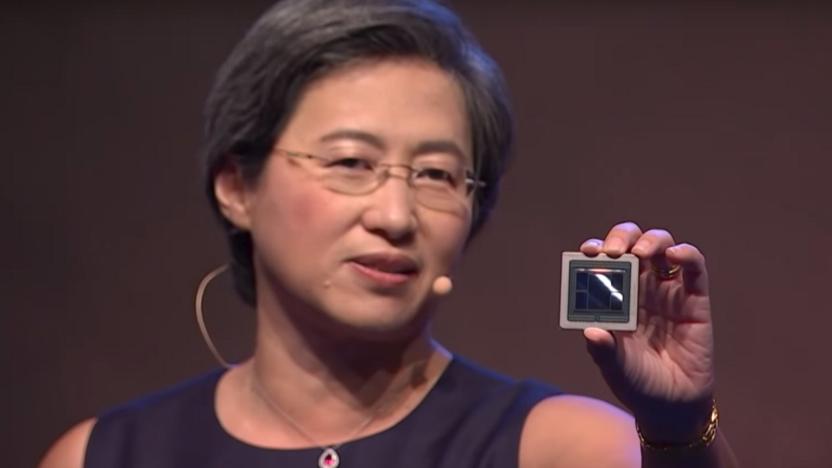
AMD shows off the world's first 7nm GPU, but it's not for games yet
AMD wasn't content just to unveil its 32-core Threadripper chip today. The company also gave us a glimpse of the Vega 7nm GPU, the first graphics processor to be built on such a small process. It's part of the company's Radeon Instinct line, and consequently, it's mainly meant for servers and complex tasks like machine learning. AMD CEO Lisa Su assured the crowd that 7nm Navi chips are on the way for gaming cards, but there's a good chance we won't see those until 2019.
Devindra Hardawar06.06.2018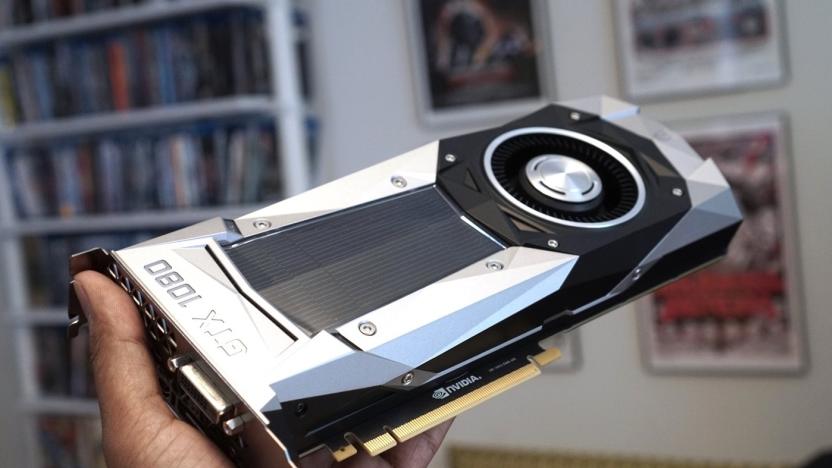
You can buy NVIDIA GeForce GTX cards for not-insane prices again
Fortnite builders, Overwatch heroes and PUBG squads might soon play those games with extra clarity if they've been clamoring for a new NVIDIA graphics card. Low availability and high prices recently made the 10-series GeForce GTX GPUs hard to come by. However, the cards are back in stock on NVIDIA's site and at retailers, with standard retail prices that make it easier for gamers to get one.
Kris Holt05.09.2018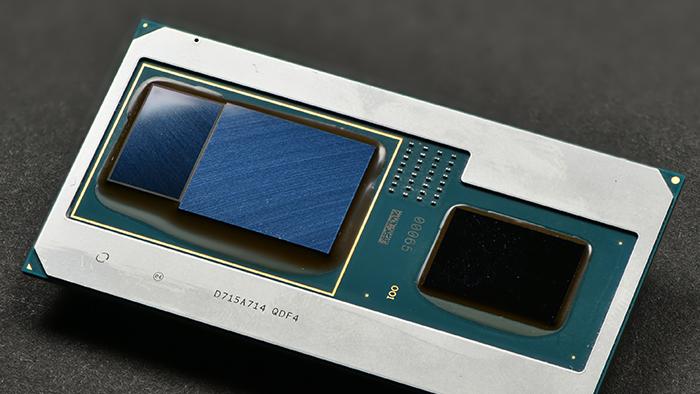
Intel unveils its first chips with AMD's Vega graphics
The fruits of Intel and AMD's unprecedented partnership are finally here. Intel just unveiled its 8th generation Core CPUs with AMD's RX Vega M, bringing together its fastest mobile processors with graphics capabilities that used to required a dedicated GPU. Together, they'll lead to thinner and lighter laptops with decent gaming chops. While we got an overview of the chips back in November, we finally have more details at CES. And, simply put, gamers should be pleased.
Devindra Hardawar01.07.2018